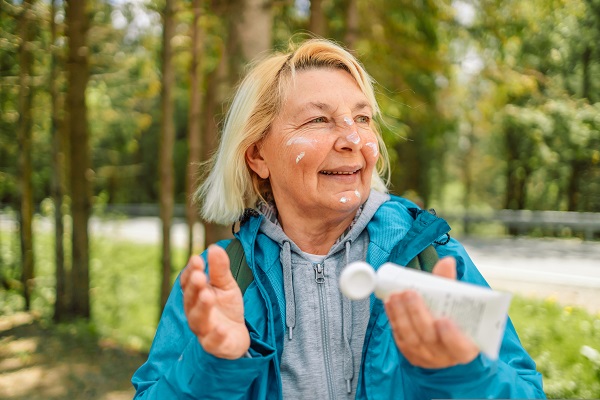Tips for Selecting Sunscreen

Summer is in full swing! Maybe you’ve ventured into the great outdoors, only to suffer your first sunburn of the season. If you forgot your sunscreen, you are among the majority of Americans who don’t use sunscreen properly—or at all. The American Medical Association and the American Academy of Dermatology (AAD) report that few people use sunscreen to protect their skin, and those who do may not be selecting a product that provides effective protection.
According to the AAD, only 14.3 percent of men and 29.9 percent of women are regularly using sunscreen correctly. Dawn Holman, MPH, of the Centers for Disease Control and Prevention (CDC), said that women may be more likely to use sunscreen, specifically on their faces, because they want to prevent premature aging of the skin. People who have lighter skin that burns easily also are more likely to use sunscreen. But, warned dermatologist Dr. Mark Lebwohl, former president of the AAD, “Anyone can get skin cancer, so everyone should take steps to protect themselves from the sun.”
A second study, published by JAMA Dermatology, found that consumers who do use sunscreen are likely to be confused by labels as they try to select the best product. Fewer than half understand what “SPF” means, and even fewer know what “broad-spectrum” means. (“SPF” stands for “sun protection factor,” which rates a product’s effectiveness in blocking UV rays. “Broad spectrum” sunscreens protect against both UV-A radiation, which is associated with skin aging, and UV-B radiation, which causes sunburn. Both can cause skin cancer.)
Fortunately, noted Dr. Lebwohl, “Recent sunscreen regulations implemented by the U.S. Food and Drug Administration make it easier for consumers to see on the sunscreen label whether the product is broad-spectrum.”
The AAD offers tips for selecting and using sunscreen:
- Choose a broad-spectrum, water-resistant sunscreen with an SPF of 30 or higher.
- Apply sunscreen at least 15 minutes before sun exposure.
- Use enough sunscreen to cover your whole body (about an ounce for most adults), and apply it to all exposed areas, including the ears, scalp, tops of the feet and legs.
- Ask someone else to help you apply sunscreen on hard-to-reach spots like your back.
- Reapply sunscreen at least every two hours, or immediately after swimming or sweating.
Visit the American Academy of Dermatology’s website to learn much more about frequently asked sunscreen questions.
Source: IlluminAge with materials from the American Academy of Dermatology and the American Medical Association.
![Health Concepts [logo]](https://healthconceptsltd.com/wp-content/themes/healthconcepts-corporate/images/logo.png)
